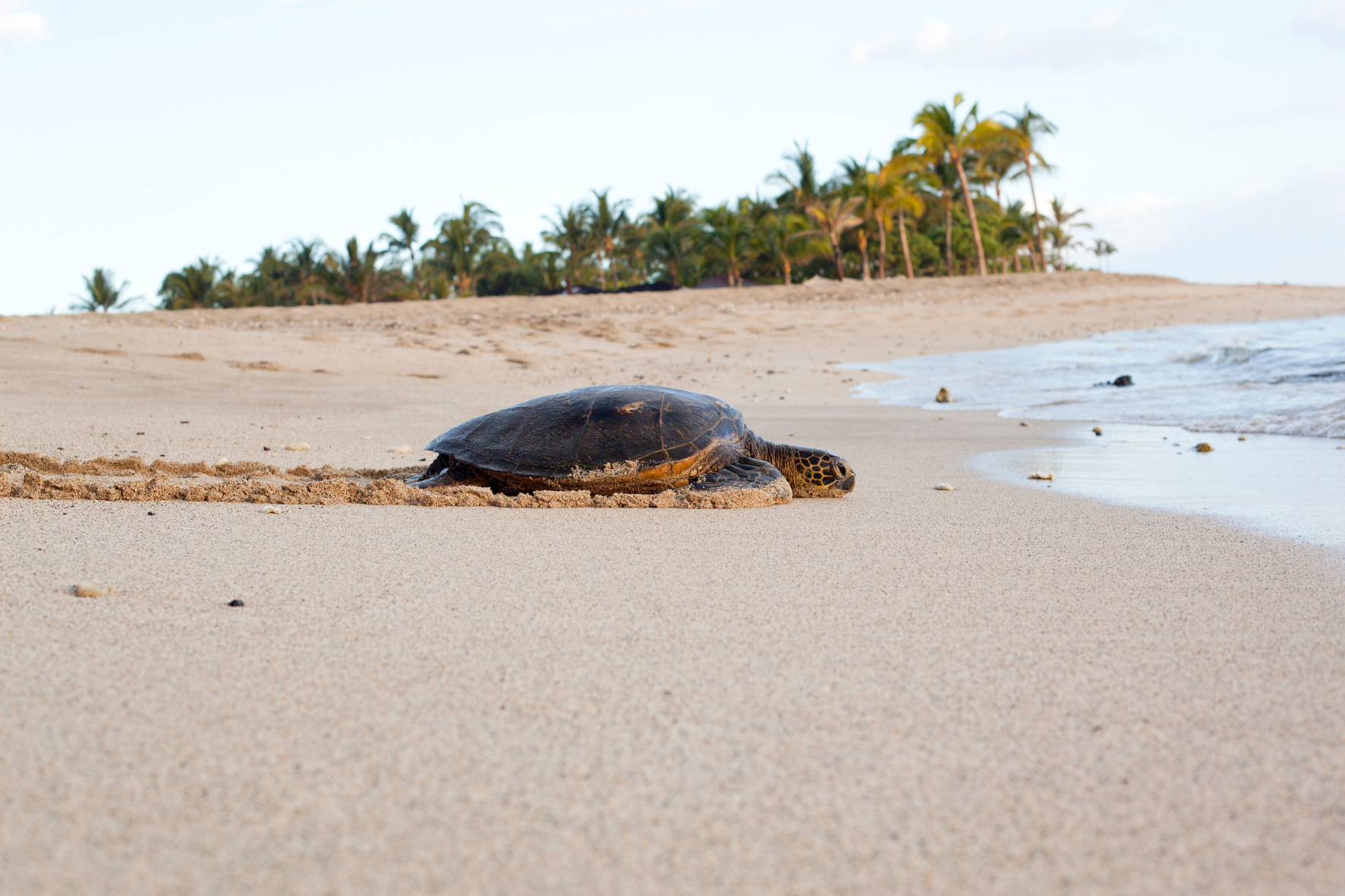
Sea rise level is caused by global warming through two factors: the melting of glaciers and icebergs and the expansion of the seas because of the dilation of the waters due to the increase of their temperature.
Since 1880, the level of the oceans has increased by 23 cm and it is estimated that each year this level increases by 3.2 mm and will accelerate. Thus, by 2050, it could reach an increase of 30 cm.
1) Sea turtle life:
Turtles use both water and land in their life cycle. Indeed, although they live mainly in the seas and oceans, they use the land, namely the beaches, for the nesting period.
Indeed, it is on the beaches that the turtles dig holes in the sand to lay their eggs and hatch them. Most of the time, females return to the same beaches where they themselves hatched to give life to their offspring as their memories are imprinted with a magnetic map of the sandy beach they hatch.
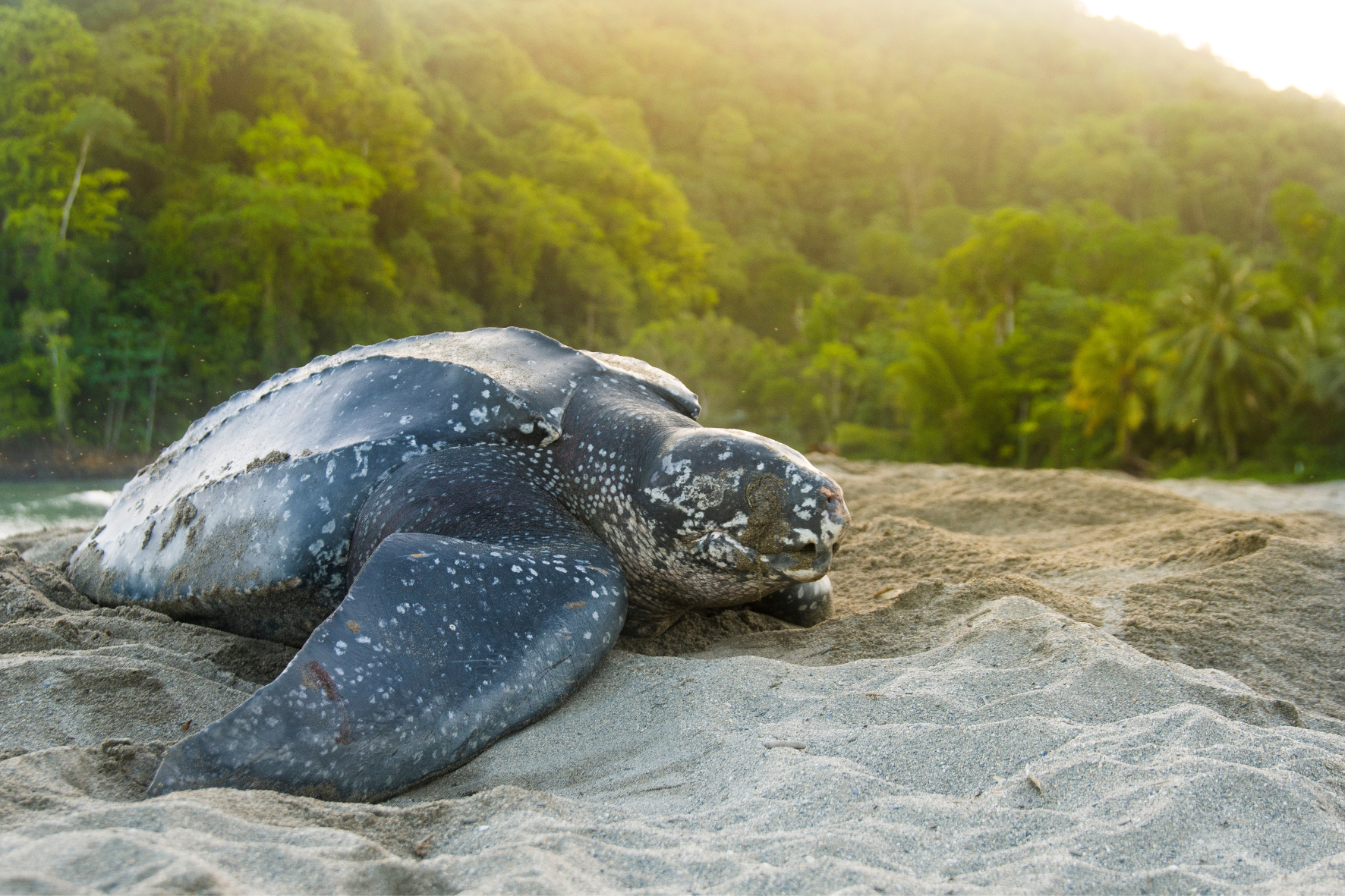
Leatherback Turtle
The gender of the turtles is defined by the temperature of the sand in which the nests are. The higher the temperatures, which is the case with global warming, the more births will be females, which causes an imbalance in the gender ratio and threatens the survival of the species.
Once the eggs hatch, out of 1000 baby turtles, only 1 will reach adulthood because of predators and natural obstacles.
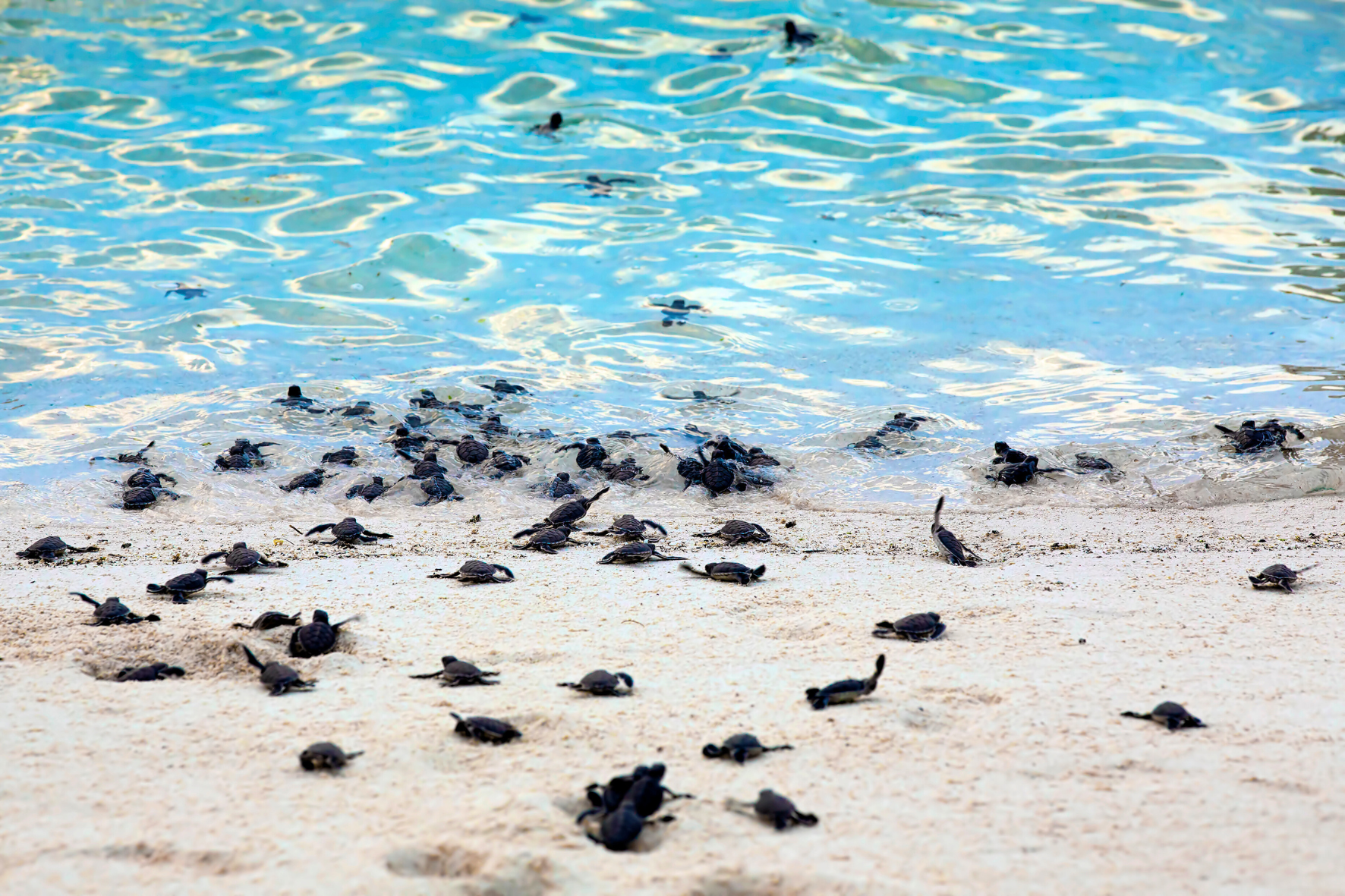
Baby turtles go to the ocean after hatching
Turtles, already threatened by overfishing and plastic ingestion, are also endangered by rising oceans.
2) The consequences of the sea rise level:
It is in Australia, Dominican Republic, Costa Rica and the USA that the biggest floods in the world will take place.
According to a new study published in the Scientific Reports, sea rise level threatens to submerge 7 nesting sites in the world of 5 different turtle species, namely the leatherback, loggerhead, hawksbill, olive ridley, and green sea turtle.
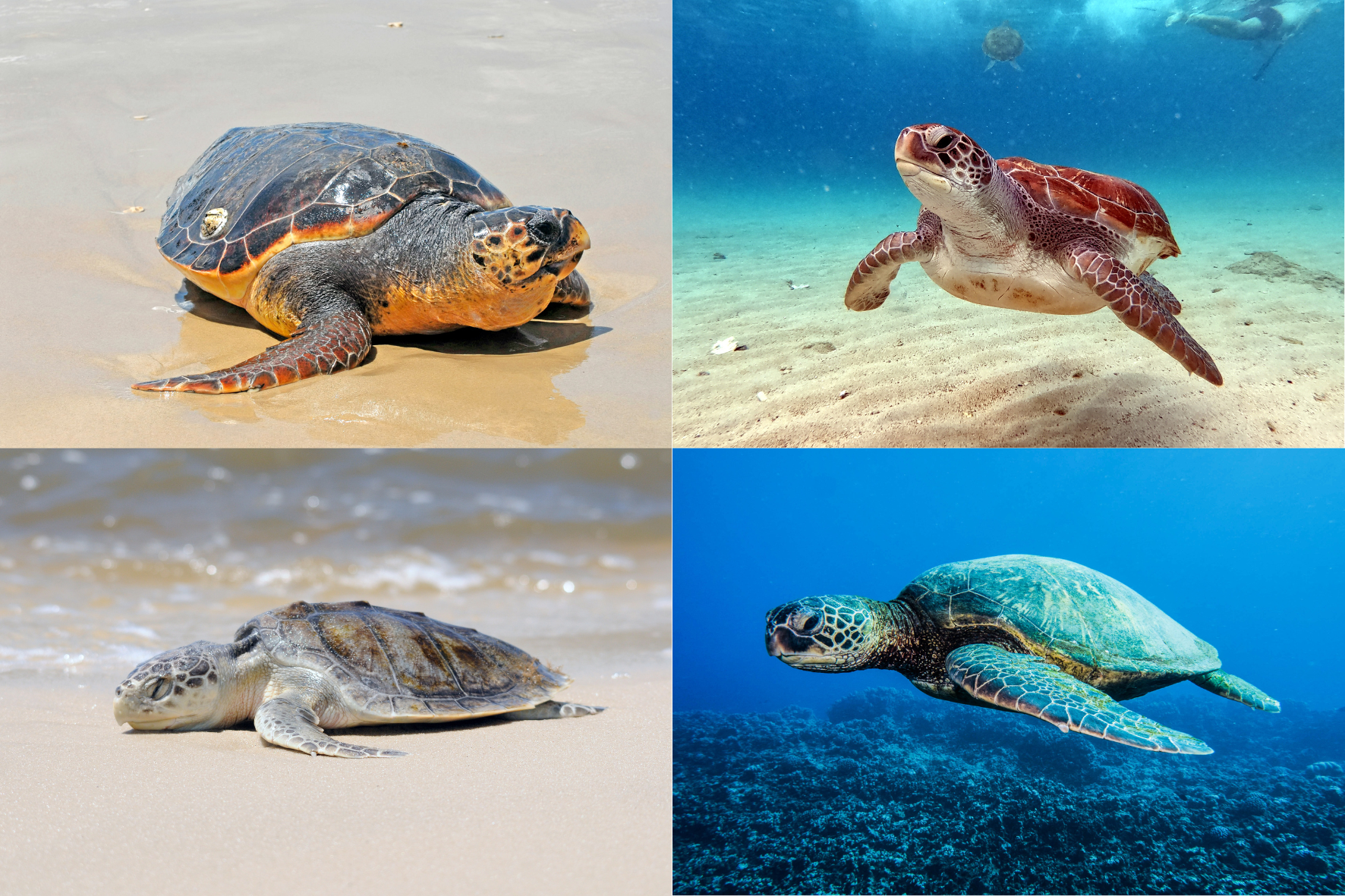
From left to right, up to bottom:
Loggerhead, Hawksbill, Olive Ridley and Green Sea Turtle
Leatherback turtles are the most vulnerable because they tend to nest in open areas close to the water while Hawksbill and green turtles tend to nest in higher areas, closer to dunes and cliffs.
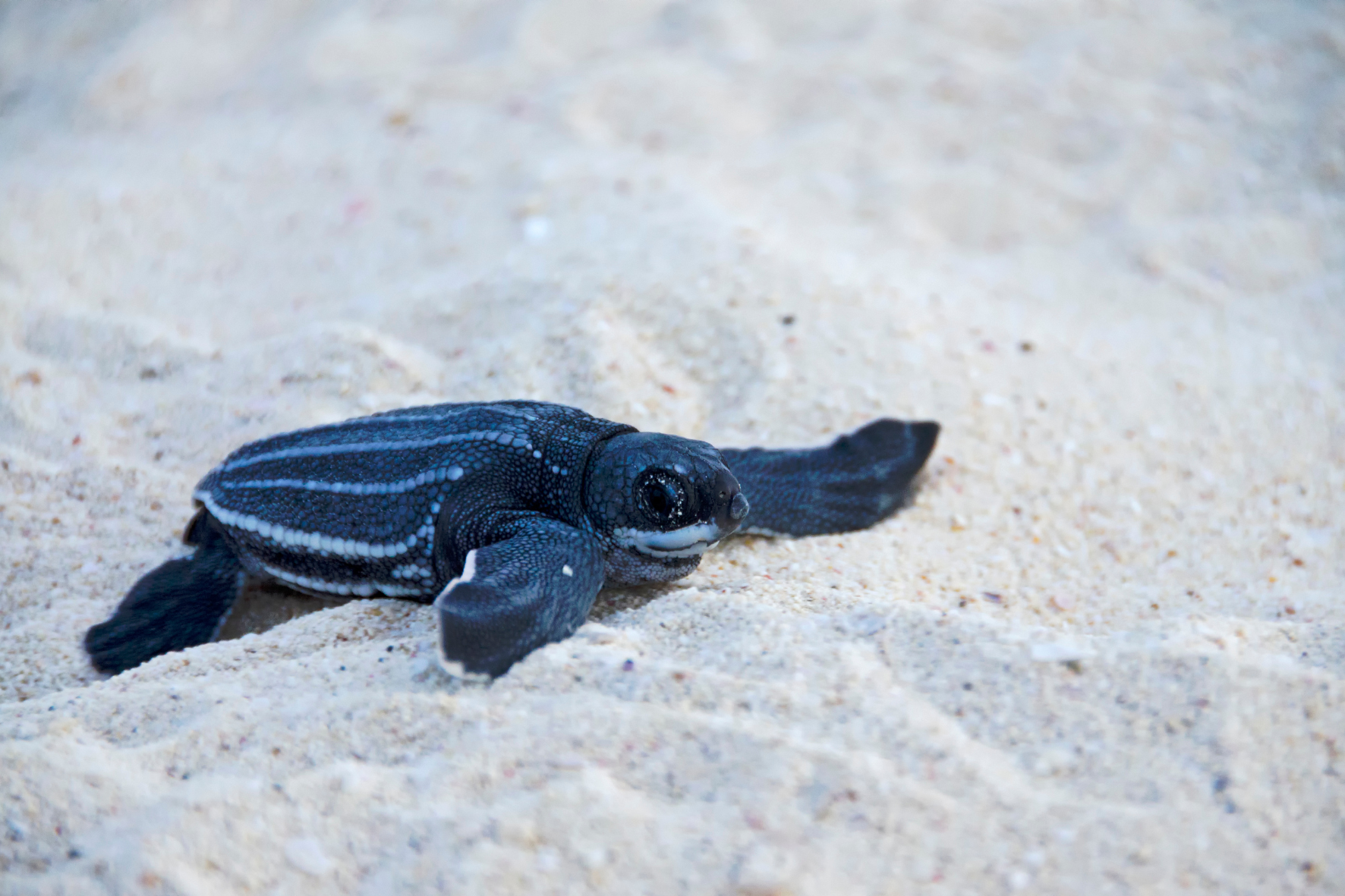
Baby Leatherback Turtle
But more specifically, 4 of these 7 sites, Raine Island, Saona Island, St George Island and Mondonguillo Beach, would be 100% flooded by 2050 under the most likely scenarios, even with moderate gas emissions.
In St. Eustatius, a Dutch island in the Caribbean, flooding predicted by 2050 makes 50% of leatherback nests, 18% of hawksbill nests, and 13% of green turtle nests vulnerable.
The fact that female turtles return to the same beaches where they hatched to nest results in some turtles nesting on flooded beaches, which could have a negative impact on the number of turtles hatching.
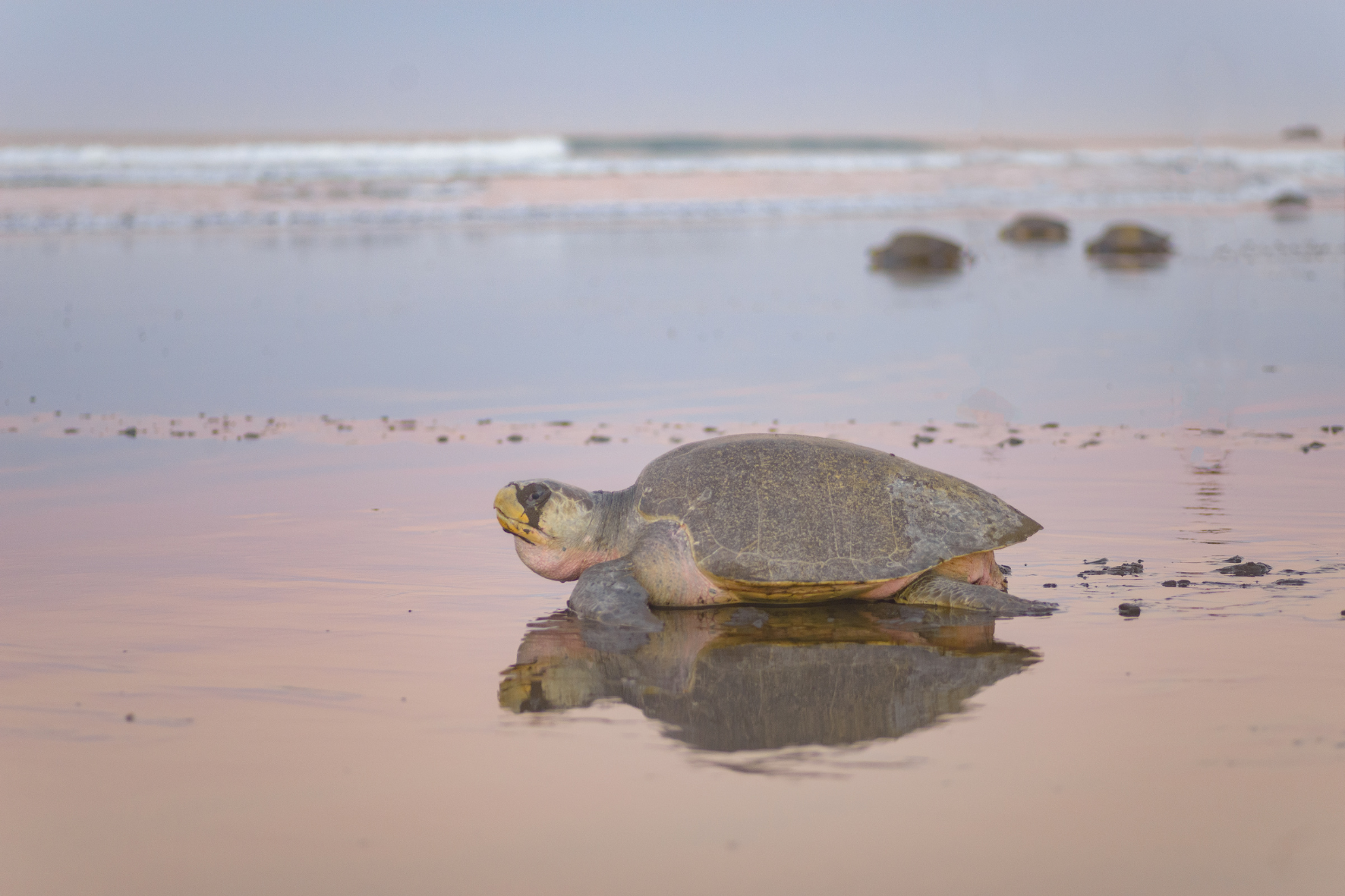
A Loggerhead Turtle
Relocation of turtle nests to higher elevations is also a problem because the temperatures there are different and could unbalance the gender ratio of baby turtles (female births only).
“We need to help protect their nesting population because without those, with the high mortality they’re suffering, it’s impossible to keep their species for the future” (Marga Rivas, a biodiversity and nature conservation researcher at the University of Cadiz in Spain and author of the study)
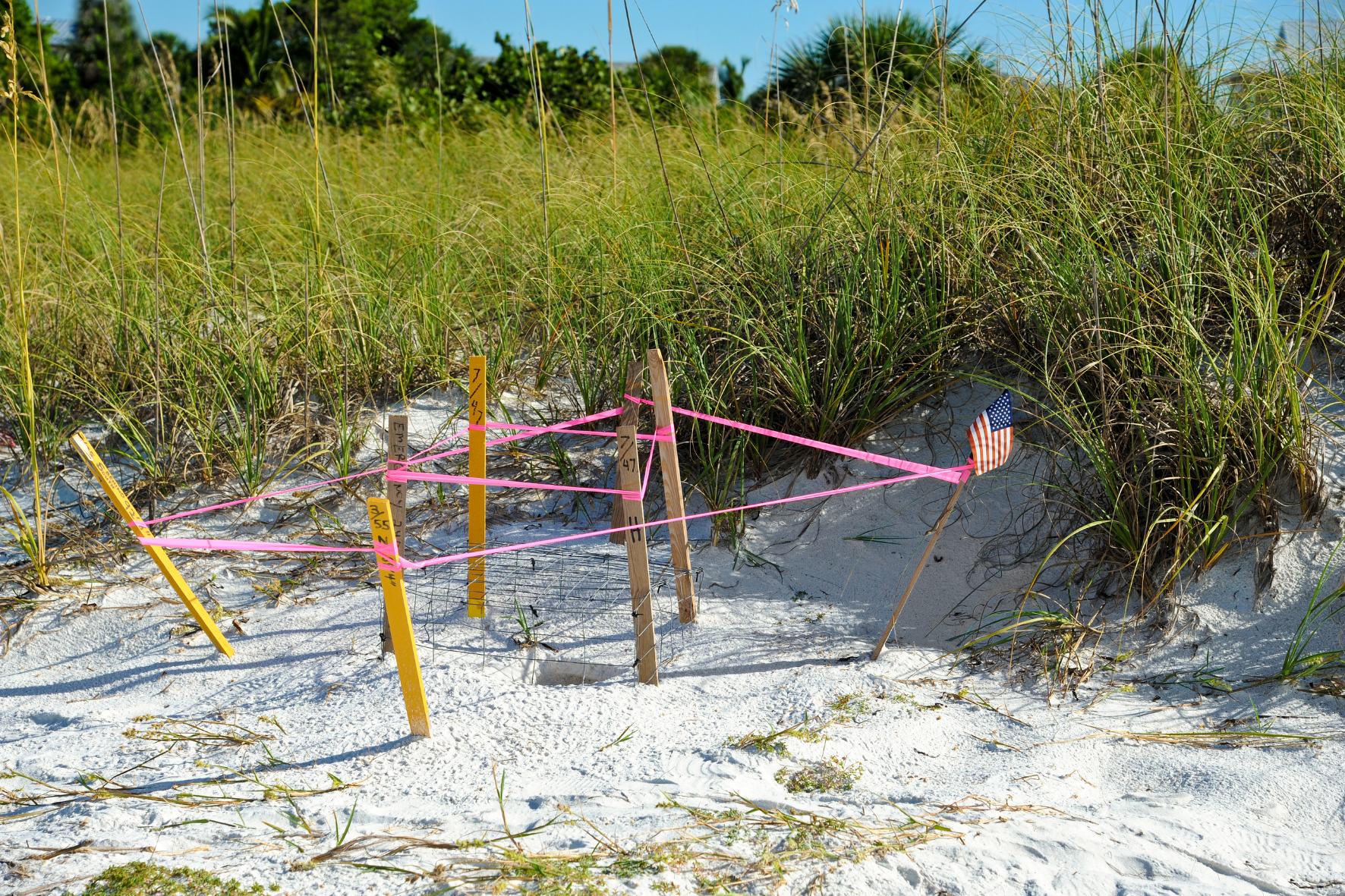
Protection of a nest
According to the study, conservation efforts are already underway at Raine Island to make the turtle population more resilient and researchers recommend copying these efforts elsewhere.
Sources:
- https://www.wwfca.org/?19554/Sea-turtles-threatened-by-rising-seas
- https://www.nature.com/articles/s41598-023-31467-1
- https://climate.nasa.gov/news/2879/climate-change-puts-pressure-on-sea-turtles/
- https://conserveturtles.org/information-sea-turtles-threats-climate-change/
- https://abcnews.go.com/US/sea-level-rise-wash-turtle-breeding-grounds-world/story?id=98693271
- https://wwf.panda.org/wwf_news/?19554/Sea-turtles-threatened-by-rising-seas
- https://cosmosmagazine.com/nature/marine-life/turtle-nests-sea-level-rise/
- Fish et al. 2005. Predicting the Impact of Sea-Level Rise on Caribbean Sea Turtle Nesting Habitat. Conservation Biology 19(2):482-491 (Available on: https://www.researchgate.net/publication/227735306_Predicting_the_Impact_of_Sea-Level_Rise_on_Caribbean_Sea_Turtle_Nesting_Habitat)
- https://climate.nasa.gov/vital-signs/sea-level/
- https://www.nationalgeographic.com/environment/article/sea-level-rise-1




